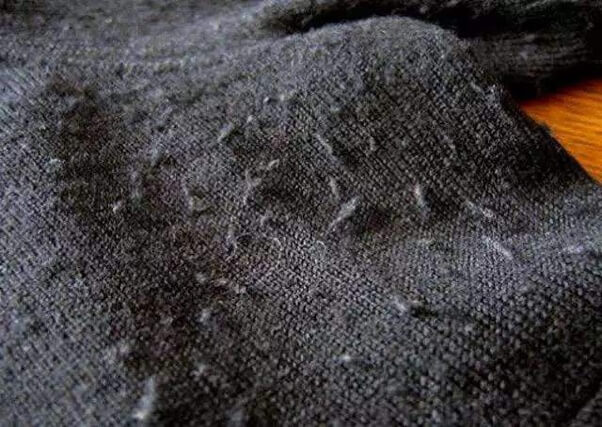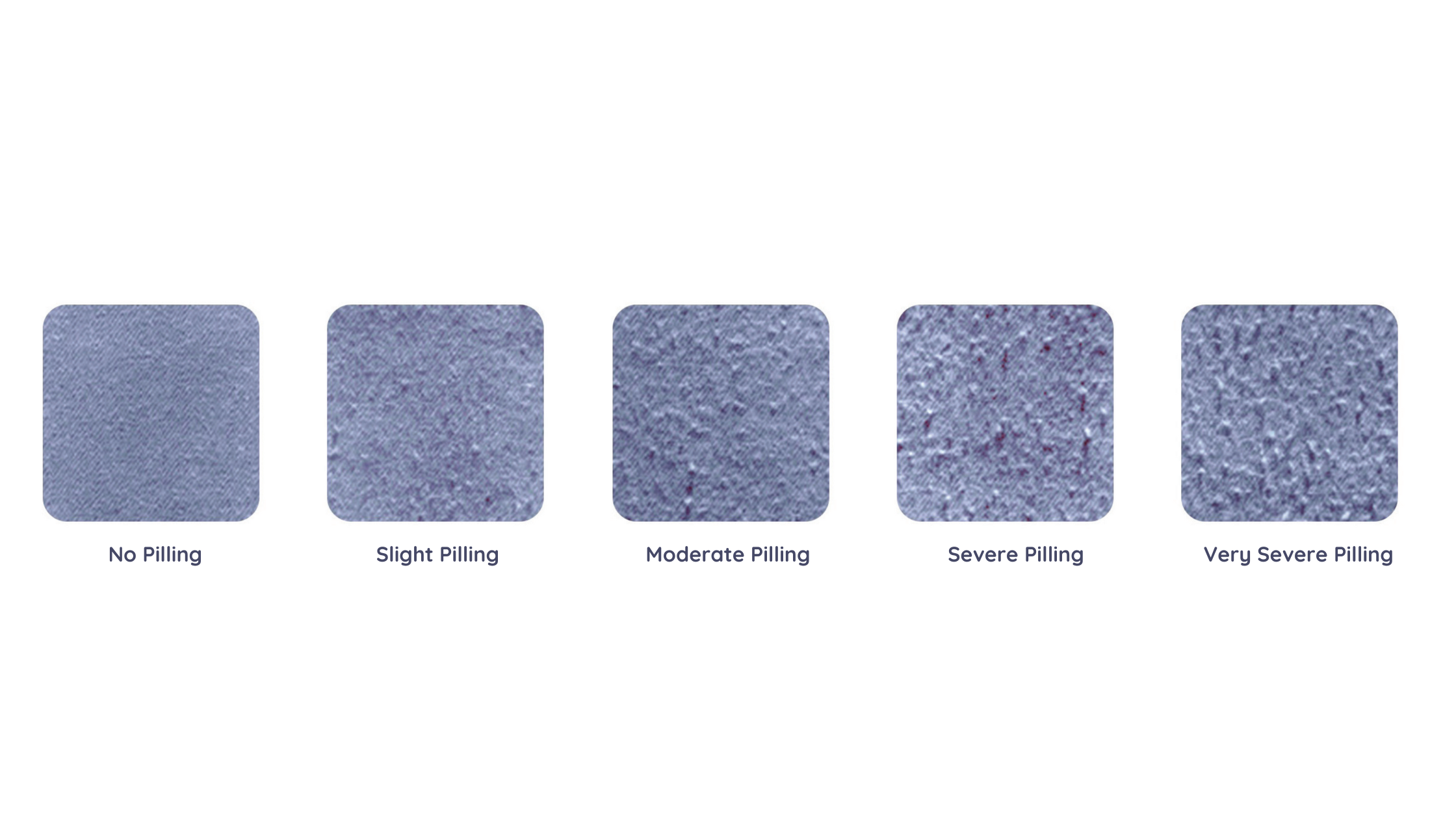Fabric Pilling: Causes, Treatment, and Prevention

Fabric Pilling: Causes, Treatment, and Prevention
Today, we're delving into a topic that might not be the most glamorous, but it's an absolute must-know for anyone looking to make their mark in the fashion industry. We're about to unravel the mysteries of fabric pilling and why it's a concern that should be on your radar if you're in the business of creating clothing brands that stand out in terms of quality and durability.
Now, you might be wondering, "Why should I, as a clothing brand creator, care about fabric pilling?" Well, get ready to discover why understanding and preventing fabric pilling is not just a good idea but a crucial step in ensuring the long-term success and reputation of your brand.
What Is Fabric Pilling?
Fabric pilling is the formation of those annoying little lint balls or fuzz balls on the surface of your clothing. You've probably seen them on your favorite hoodie or shirt, and they can make your product look cheap and worn out. While seemingly harmless, fabric pilling is a significant concern for clothing brands striving for quality and longevity.
Now, you might be thinking, "Is fabric pilling really a big deal for my clothing brand?" The answer is a resounding yes! Here's why:
Why Clothing Brands Should Care About Fabric Pilling
1. Quality Matters
As business owners and brand creators, we know that quality is everything. Fabric pilling can be a telltale sign of low-quality materials or poor construction, which can damage your brand's reputation.
2. Customer Satisfaction
Imagine a customer buys your premium hoodie, and it starts pilling after just a few wears. They won't be happy, and they might not come back for more. Ensuring your products stay in top shape is key to customer satisfaction.
3. Brand Image
Your brand's image is built on trust and reliability. Avoiding fabric pilling helps you maintain that image and keeps customers coming back.

The Science Behind Fabric Pilling: Factors You Need to Know
As we get deeper into fabric pilling, it becomes clear that this seemingly simple phenomenon is influenced by a multitude of technical factors that play a crucial role in defining the overall quality of textiles. Let's explore some of these factors, shedding light on what makes fabric pilling such a complex issue, and how it impacts the quality of your clothing.
1. Type of Fiber Used
The choice of fiber is paramount when it comes to fabric pilling. It differentiates between synthetic pills and those that appear on natural fabrics. Here's the deal: Synthetic pills are notorious for being nearly impossible to remove without causing further damage. Attempting to rid your garments of synthetic pills often results in unruly loose threads. On the flip side, natural fabric pills can be easily removed with simple tools, and they won't leave you dealing with a tangled mess. This is why many consumers appreciate clothing made from natural fibers.
2. Length of the Fiber Used
The length of the fiber in your textiles matters. Short fibers are more prone to pilling than their longer counterparts. Longer fibers offer greater resistance to friction and are less likely to succumb to pilling. So, when selecting materials for your clothing brand, consider the fiber length to ensure durability and longevity.
3. Composition of the Fabric
Fabric composition plays a pivotal role in determining the extent of pilling. When a fabric is composed of a blend, with one fiber being strong and another weaker, pilling becomes more noticeable. Here's why: the weaker fiber tends to wear and break, while the stronger one clings onto the pills. This intricate interplay between fibers can impact the overall appearance and quality of your garments.
4. Type of Yarn Used
The yarn used in fabric production is another crucial factor. Yarns that are more compact, often achieved through a high level of twisting, tend to exhibit a lower propensity for pilling. On the other hand, loose yarns with minimal twist are more susceptible to pilling. When deciding on yarns for your clothing line, keep in mind that yarn construction can significantly influence the pilling potential of your products.
5. Structure of the Fabric
The fabric's structure itself plays a pivotal role in its susceptibility to pilling. Knitted fabrics, known for their loose structure, are prone to pilling due to the ease with which fibers can break free. In contrast, woven fabrics and those made from tightly twisted yarns are less likely to pill. These fabrics securely hold the fibers in place, reducing the occurrence of fluff and pilling. So, the structural composition of your fabric is an essential consideration when designing garments for your brand.

Preventing Fabric Pilling: A Guide for Your Customers
Here's a comprehensive guide you can share with your customers to educate them about fabric pilling and how to avoid it:
What Causes Fabric Pilling?
Understanding the causes of fabric pilling is the first step in preventing it. Pilling happens when fibers on the surface of a fabric break loose and form those pesky lint balls. But why does this occur?
1. Natural Wear and Tear
Everyday movements like walking, sitting, and stretching can cause friction on the fabric, leading to pilling. It's natural wear and tear that's hard to avoid.
2. Agitation
More aggressive actions, like washing your clothes in a machine, can accelerate the pilling process. The rubbing of fabric against fabric during washing creates friction, which leads to more pilling.
Types of Fabric pilling
No Pilling
Slight Pilling : Light fuzziness on the surface
Moderate Pilling: The surface is partially covered in pills of different sizes and densities.
Severe Pilling: A significant amount of the surface is covered in pills of varying sizes and densities.
Very Severe Pilling: Severe pilling that covers the entire surface of the fabric

How to prevent fabric pilling
Now, let's get to the exciting part—how to prevent fabric pilling in your clothing.
1. Gentle Wash Cycles
When caring for your garments, opt for shorter and gentler wash cycles on your washing machine. These cycles involve less agitation during washing, which can protect your clothes and reduce unnecessary wear and tear. Remember, your clothes don't need a rough wash to stay clean!
2. Hand Washing
For delicate items like that special dress or that soft sweater, consider hand washing. Hand washing is a gentler method that allows you to have better control over friction. It helps prolong the life of your garment by minimizing the stress it undergoes during cleaning.
3. Inside-Out Washing
Before tossing your clothes into the washing machine, try turning them inside out. This simple yet effective step creates a protective layer that shields the fabric's surface from abrasion. It's like giving your clothes a little extra armor against pilling.
4. Sort Delicates
When doing your laundry, it's wise to sort delicate items separately. Delicate fabrics can easily suffer from abrasion when washed with more rugged clothing items like jeans and jackets. Keep them in a separate load to preserve their quality.
5. Choose the Right Detergent
The detergent you choose can make a big difference. Opt for laundry detergents containing cellulase enzymes. These enzymes are heroes in the battle against fabric pilling, especially for cotton-based items. They work to break down those pesky pills, keeping your clothes looking fresh and new.
6. Avoid Bleach and Harsh Detergents
Be cautious when using bleach or laundry detergents with harsh chemicals. These substances can weaken fabric fibers over time, making them more prone to pilling. Instead, go for gentler, fabric-friendly detergents that will keep your garments in top shape.
How To Get Rid Of Pilling On Clothes
Even if you've taken every measure of care, cloth pilling is sometimes unavoidable, especially with specific textiles and objects. Loosely woven materials such as wool, fleece, flannel, and others are also prone to pilling. Thankfully, there are several techniques for getting rid of pilling from clothing.
1. Using A Lint Roller Or Tape To Remove The Fuzz
Simple sticky tape or lint rollers are easy ways to remove more loosened pills from fabric. To remove fuzz balls, press the sticky side of the tape down onto the object and pull off.
2. Use A Sweater Stone To Get Rid Of Pills
Typically composed of pumice, a sweater stone removes the pills from the fabric by gently rubbing it along the surface of the item.
3. Use A Fabric Shaver To Remove Fabric Pilling
Battery-powder fabric shavers are additional tools for getting rid of fabric pilling. When using fabric shavers, be careful because too much pressure can remove more material than you want.
4. Use A safety Razor Or Scissors
Another option to remove fabric pilling is to draw the fabric taut over a curved surface, then use a safety razor to shave the cloth's surface or tiny, sharp scissors to delicately cut off the pills.
In Conclusion
Fabric pilling is a multifaceted issue influenced by various technical factors. Understanding these factors and their implications for the quality of your clothing is essential for anyone involved in the clothing business. By selecting the right fibers, fiber lengths, fabric compositions, yarn types, and fabric structures, you can minimize the risk of pilling and offer your customers durable, high-quality garments they'll love. Remember, the devil is in the details, and when it comes to fabric pilling, attention to these technical factors can make all the difference in the world.
Educating your customers about fabric care is a valuable way to enhance their experience with your brand. Happy, pill-free clothing means happy customers and a thriving clothing brand!
About FittDesign
FittDesign is a full-service design and production company specializing in the sportswear and activewear industry. We provide comprehensive solutions including innovative design, detailed technical packs, and high-quality manufacturing. Our expertise supports brands in creating functional and durable sportswear that meets the demands of a competitive market.
Ready to Bring Your Activewear Vision to Life?
Contact Us today and let’s get started on your project!
